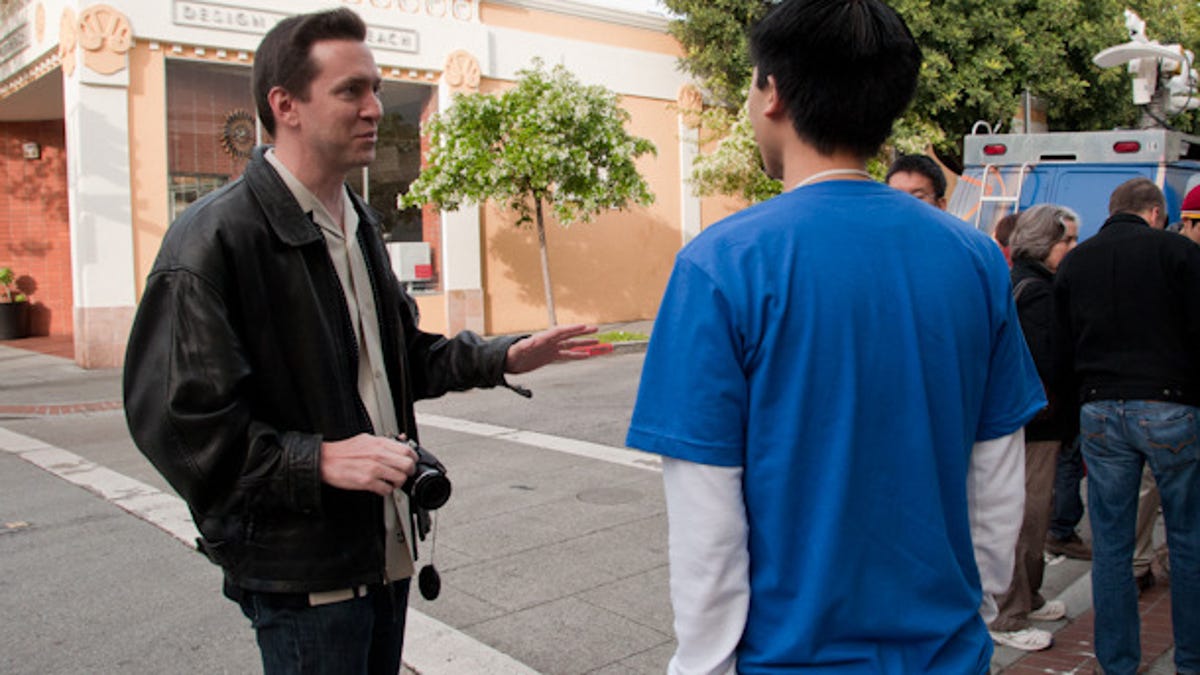Apple's iOS chief recalls iPhone's 'Fight Club' beginnings
On the stand, Apple's iOS chief talks about the early days of the iPhone, including how the company put up "Fight Club" signs on top secret doors.

SAN JOSE, Calif. -- After explaining to the court how it designed and marketed the first iPhone and iPad, Apple today brought out the architect behind the software, who re-told the device's secretive beginnings.
That includes locking down an entire building at the company's Cupertino, Calif. headquarters, and taking it over floor by floor to begin work on the top secret project.
While Apple's secrecy is well-known, Scott Forstall described just how extensive it got in the beginnings of the iPhone project. Extra security points were added, including more badge scanners, cameras, and cheeky signage on doors and other entry-ways in that building with reference to Chuck Palahniuk's novel "Fight Club."
"The first rule of Fight Club is that you don't talk about it," Forstall said, telling the court that the original iPhone was only referred to by those in the know, by color -- in this case project "purple."
History lessons are always fun, but Apple brought Forstall out specifically to talk about the company's patents, which are at the center of the case between it and Samsung in this trial. In particular, Forstall talked about the creation of the company's double tap patent, which lets users double tap an area of the screen to zoom into just that particular snippet.
Forstall said he had come up with the idea after spending time with prototypes of the iPhone, using the pinch to zoom feature that was already there in order to perfect the part of a Web page he was looking at. He explained that he began doing this a lot, to the point where he wanted an automatic way to make that happen, something the company says it solved by analyzing Web page code.
"There was a lot of work to figure out the correct structure and the correct box, and zoom into that one," Forstall said.
In its complaint, Apple says Samsung is infringing on this patent -- something Samsung has attempted to disprove by showing prior instances of it in action.
During his cross-examination by Samsung's legal team, Forstall was asked why the company was talking about buying up competing smartphone products, based on internal e-mails with some of Apple's top executives. Forstall replied by saying it was part of the carriers' requirements to make sure that models they were working on were up to snuff when it came to dropped calls and antenna performance.
Samsung's attorney also pointed out that the company purchased competing devices for tear-downs, something Forstall said was also part of the benchmarking process. That included an e-mail exchange between members of the executive team, where Apple's Eddy Cue said there could be a potential market for a smaller tablet than the iPad.
Besides the competitive questions, Forstall went into the beginnings of the team behind the iPhone project, telling the court that Apple co-founder and CEO Steve Jobs gave him carte blanche to hire, but there were some serious strings attached.
"Steve gave me a difficult constraint," Forstall recalled. "He didn't want -- for secrecy reasons -- me to hire anyone from outside of Apple to work on the user interface, meaning anything you see on the screen." Instead, Jobs said he could "hire anyone" from within the company.
Forstall argued that the move could have hurt Apple if things hadn't gone right.
"We moved out other releases of other products," Forstall said. "Had we not succeeded, many of these people might have burned out and left.
The trial, which began earlier this week, is currently in its testimony phase. Each side is calling up witnesses, with Apple going first. So far that's included Apple designer Christopher Stringer and marketing chief Phil Schiller. Following Forstall's testimony, Apple is calling its first non-employee witness, Justin Denison, Samsung's chief strategy officer.
Updated at 2:04 p.m. PT with additional details from the testimony.

